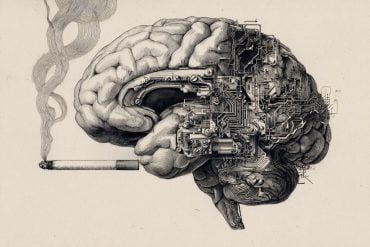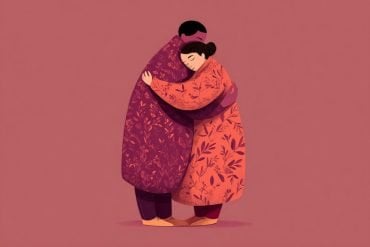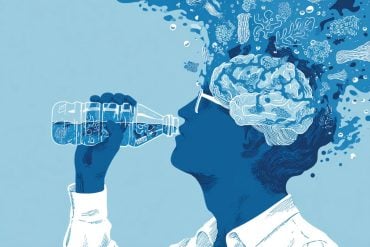Summary: Researchers have discerned the nuanced relationship between feeling lonely and actually being alone.
The study revealed that loneliness creeps in when individuals spend over 75% of their time in solitude. For older adults, a significant link was identified between loneliness and being alone.
To better quantify social behavior, the research team is developing SocialBit, a smartwatch app akin to fitness trackers.
Key Facts:
- Loneliness becomes pronounced when individuals spend more than three-quarters of their time alone.
- In older adults (above 67 years), the correlation between loneliness and time spent alone is particularly strong, with a 25% overlap.
- The Electronically Activated Recorder (EAR) app was used in the study to assess daily social behaviors, and a forthcoming app, SocialBit, aims to measure social activity by tracking conversation minutes per day.
Source: University of Arizona
In a world filled with endless connections and constant communication, the relationship between loneliness and aloneness is not always clear.
Now, University of Arizona researchers have analyzed that relationship – and found that they are two different things that are not closely correlated.
People don’t feel lonely until they spend three-quarters of their time alone, the study found. However, when their alone time goes beyond 75%, it becomes difficult for them to avoid feelings of loneliness.

Published in the Journal of Research in Personality in September, the study also concludes that among older adults, there is a particularly strong association between time spent alone and feeling lonely.
The study was led by Alex Danvers, a former postdoctoral associate at UArizona, and Liliane Efinger, a former visiting graduate student.
The social network of people gets smaller as they get older, and the ability to spend time with others diminishes for many older adults, said David Sbarra, a UArizona professor of psychology and a senior author on the paper.
“Among adults 68 years and older, we found that loneliness is strongly connected with being socially isolated,” Sbarra said.
Mentioning the 2023 U.S. Surgeon General’s advisory about the pattern of increase in loneliness, Sbarra said attention increasingly has focused on loneliness as a health determinant.
“We are learning more and more about the importance of social connections for human health, and it appears that loneliness and isolation are related but distinct concepts,” he said.
“We needed a good measure of how much time people spend alone, and that’s why we started this research,” said Matthias Mehl, a UArizona psychology professor, also a senior author of the study.
Over the course of his career, Mehl has developed a method for studying social activity in everyday life. The Electronically Activated Recorder, or EAR, is a smartphone app that records with participants’ permission the sounds they make for 30 seconds every 12 minutes.
EAR is a useful tool for observing daily social behaviors, Sbarra said. In this study, the researchers used EAR to characterize time spent alone.
“Feeling lonely is different from being alone, and EAR is an exciting new method for assessing time spent alone,” Sbarra said.
Overall, the study participants spent 66% of their time alone, and those who were alone for more than 75% of their time were the ones who felt the most lonely. On analyzing the result from the entire participant pool, there was only a 3% overlap between aloneness and loneliness.
In younger people, aloneness and loneliness are just two different things, Mehl said. They may feel lonely in a crowd, or they may not feel lonely when they are by themselves.
The case is different with older adults, Mehl said. In older people, since feeling lonely and being alone are tightly linked, being with others and socializing is the way to combat feelings of loneliness, according to Mehl.
The strong relationship between the two was found in adults older than 67, and there was an overlap of about 25% between loneliness and aloneness in older people, he said.
The study involved over 400 participants with archival data collected in a series of studies completed over the last 20 years.
“For instance, we know if the person is on the phone, if they are driving, watching television or if they are interacting with a partner or a stranger,” Mehl said.
Although EAR has many benefits, it is a time-consuming method for researchers to quantify the metrics of social behavior. To avoid hours of coding sound files and to more efficiently measure aloneness, Mehl is now working with a team to develop SocialBit, an app that runs on a smartwatch, analogous to commercially available fitness trackers.
Much as fitness trackers measure physical activity by counting steps per day, SocialBit will measure social activity by measuring minutes of conversations per day, Mehl said.
The device is expected to be rolled out in the next couple of years. The researchers are developing it for stroke patients during recovery, given that social isolation after stroke is significant, Mehl said.
“In order to facilitate more social connection, we first need to be able to measure it well,” Mehl said. “Methods like SocialBit can tell people, ‘You’ve been solitary for too long. It’s time to try to have a conversation.'”
About this social neuroscience and loneliness research news
Author: Niranjana Sahasranamam Rajalakshmi
Source: University of Arizona
Contact: Niranjana Sahasranamam Rajalakshmi – University of Arizona
Image: The image is credited to Neuroscience News
Original Research: Open access.
“Loneliness and time alone in everyday life: A descriptive-exploratory study of subjective and objective social isolation” by David Sbarra et al. Journal of Research in Personality
Abstract
Loneliness and time alone in everyday life: A descriptive-exploratory study of subjective and objective social isolation
It is widely recognized that social relationships and affiliation have powerful effects on physical and mental health. When investigators write about the impact of social relationships on health, many terms are used loosely and interchangeably including social networks, social ties and social integration. The aim of this paper is to clarify these terms using a single framework.
We discuss: (1) theoretical orientations from diverse disciplines which we believe are fundamental to advancing research in this area; (2) a set of definitions accompanied by major assessment tools; and (3) an overarching model which integrates multilevel phenomena.
Theoretical orientations that we draw upon were developed by Durkheim whose work on social integration and suicide are seminal and John Bowlby, a psychiatrist who developed attachment theory in relation to child development and contemporary social network theorists.
We present a conceptual model of how social networks impact health. We envision a cascading causal process beginning with the macro-social to psychobiological processes that are dynamically linked together to form the processes by which social integration effects health. We start by embedding social networks in a larger social and cultural context in which upstream forces are seen to condition network structure.
Serious consideration of the larger macro-social context in which networks form and are sustained has been lacking in all but a small number of studies and is almost completely absent in studies of social network influences on health.
We then move downstream to understand the influences network structure and function have on social and interpersonal behavior. We argue that networks operate at the behavioral level through four primary pathways: (1) provision of social support; (2) social influence; (3) on social engagement and attachment; and (4) access to resources and material goods.






